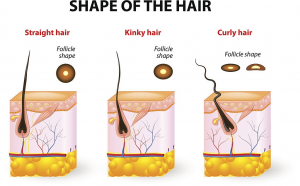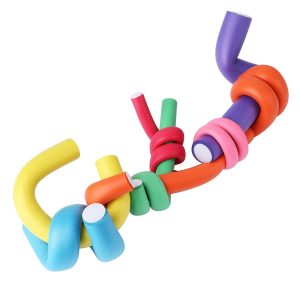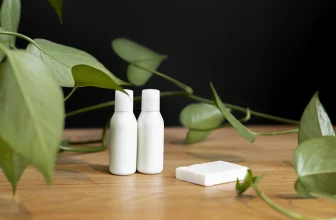Change Your Natural Hair Texture – Without Damaging Your Curls
Going natural and eliminating harsh chemical treatments from your regimen can seem like a big decision to make, but, seriously, your hair and scalp will thank you. However, that doesn’t mean you’re stuck with the same curls you’ve always had, and although the act of changing your hair may seem like a series of negotiations – you vs texture, it is perfectly possible to reach a compromise that works for you both.
What is Texture?
The texture of your hair isn’t merely about how it feels – dry, oily, or soft for example, but more to do with the shape of the hair shafts themselves, and how they grow. The hair’s cross-section is never, as you’d imagine, completely circular, and each ethnicity has a slightly different shaped cross-section. Asian hair shafts tend to be the closest to a circle and grow perpendicular to the scalp, followed by the more oval Caucasian hairs, which grow at a slight angle, while our Afro-textured hair shafts are ellipse-shaped, growing nearly parallel to the scalp. The ellipse cross-section and angle of growth makes kinking easier because an ellipse shape is less rigid than a circle and the flatter side can be bent with less effort than the curved edge of a circle.

Although we can’t change the shape of the hair shaft itself or the angle of growth, we can, however, manipulate the shape of the curls as they grow, without resorting to any nasty chemicals.
Changing Your Curls
Hair types were divided up into categories in the 1990s by Oprah Winfrey’s hair stylist, and this classification system is now widely recognized as standard. Afro hair, according to this system, falls into three distinct types:
- 4a – coiled with a defined kink pattern
- 4b – ‘z’ pattern coils with less of a defined pattern
- 4c – tight ‘z’ coils with almost no defined kink pattern
The pattern your curls make naturally, without any treatments applied, is the hair type you have, and our hair shafts, whatever we do to them, will ‘remember’ that pattern. So, for example, even if you loosen type 4c hair, it will still retain some of the ‘z’ pattern – which, having 4c myself, I can vouch for. As hair grows, the weight will naturally stretch the curls, but 4c will never have the same texture as 4a type. And this is where the art of negotiation comes into play. In order to change any hair type – remembering that you can’t change the category, you have to negotiate with your hair shafts, and reach something of a compromise.
It’s a well known fact that hair can easily get irreversibly damaged by heat, and I always try to avoid this if at all possible. So how do we change our curls?
Banding
This is a simple, but effective method of stretching your natural curls. Once you’ve washed and conditioned your hair as normal, while it’s still wet, massage through a little oil – argan, or castor oil are my go-to choices, and use your fingers to detangle. Divide your hair into small sections, and twist each one from root to tip, fastening it with hair bands as you go, with each twist having four or five bands along it, depending on its length.
Leave these in as long as you like before removing and separating the twists very carefully. Finger comb through.
The Pineapple
Putting your hair up is an excellent way to stretch out the roots, making your hair look longer and looser. Gathering all your hair on top of your head and popping a band around is a great style choice too. It’s also an effective way to look after your natural hair whilst sleeping. Just remove the band before you dash out of the door, and shake out those curls.
No-heat Curlers
These work really well, and can change your curl type with very little effort from you. I use Minerva 7” Twist-flex Foam Rods.
Minerva 42-pack 7'' Twist-flex Foam Hair Roller Curling Rods- Hair Curlers Rollers for Short, Medium and Long Hair
- 42 Pieces with 7 different rod size: 3/10", 2/5", 1/2", 9/16", 5/8", 11/16", 4/5";
- For all hair types wet or dry. Designed for curling long, medium, short hair.
- No heat needed, curl your hair without heat-damage.It is safe also comfortable to wear these rods during sleep
They’re simple to use, comfortable to sleep in and can be twisted to any shape for a variety of effects.
Wash and condition your hair as normal, and rub a little olive, coconut or argan oil through from root to tip, and divide into sections. Wrap each around a rod and twist to keep in place.
All of these methods are easily achievable at home and take very little time. So, creating a new, natural look is a great idea if you fancy a change.
Check out this video for more ways to transform your natural hair texture:
Related Posts:
- 7 Best Red Hair Dye for Dark Hair 2024 - Top Picks
- 10 Best Almond Oil for Natural Hair 2024 - Top Picks…
- 8 Best Oils For Low Porosity Hair 2024 - Review &…
- 15 Best Eyelash Extensions 2024 - Review & Buying Guide
- 9 Best Oils for 4c Hair 2024 - Review and Buying Guide
- 12 Best Coconut Oil For Natural Hair Growth 2024 -…







